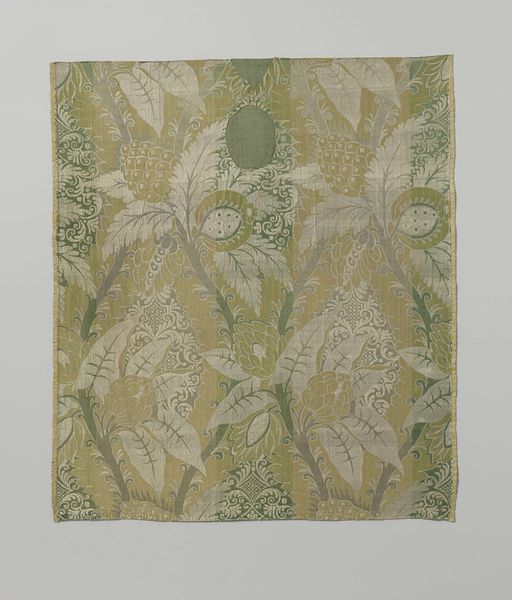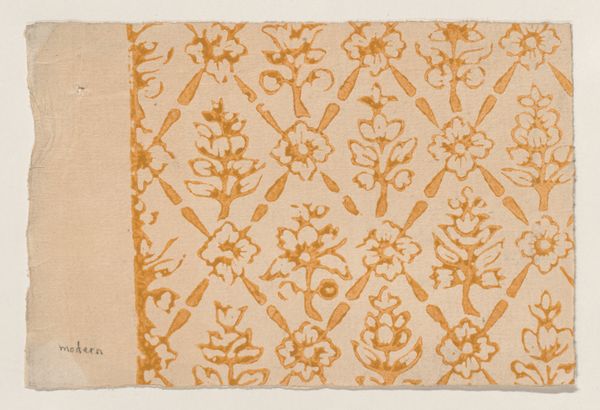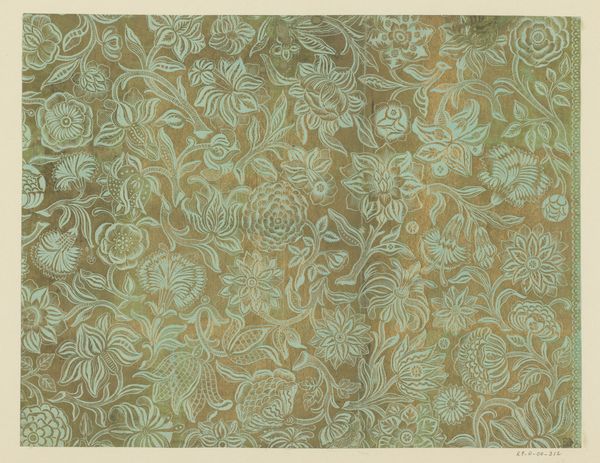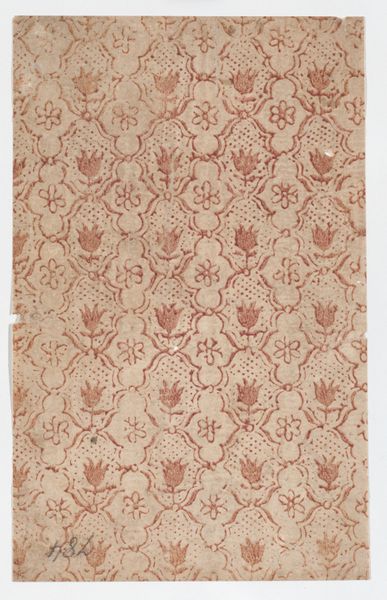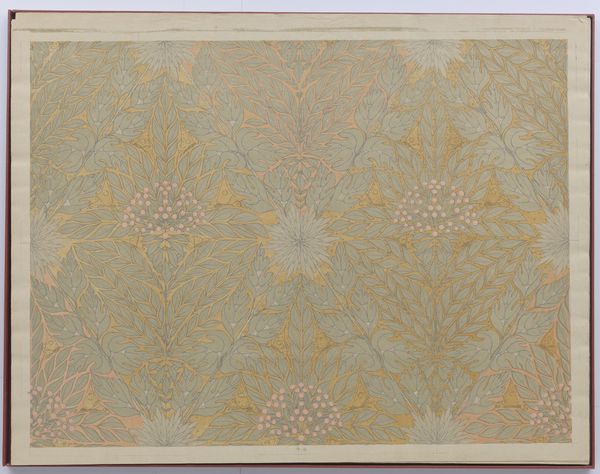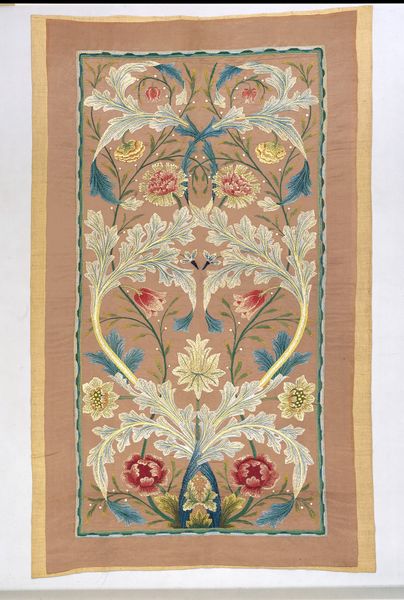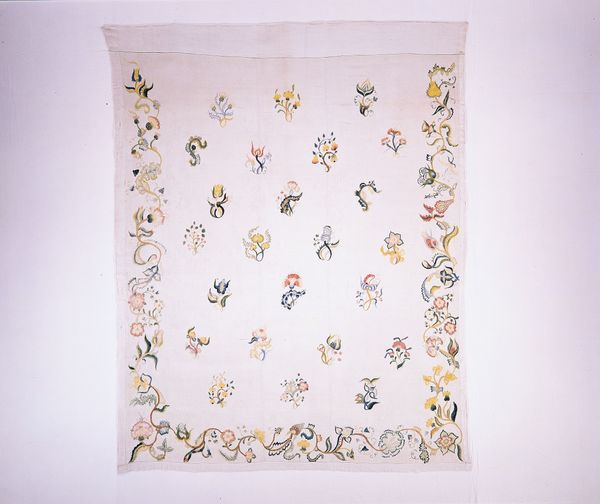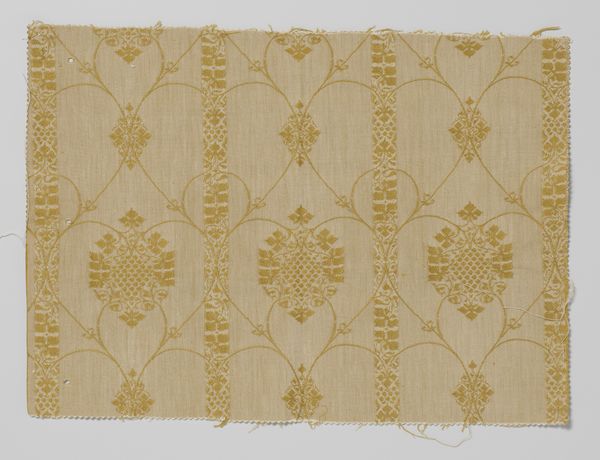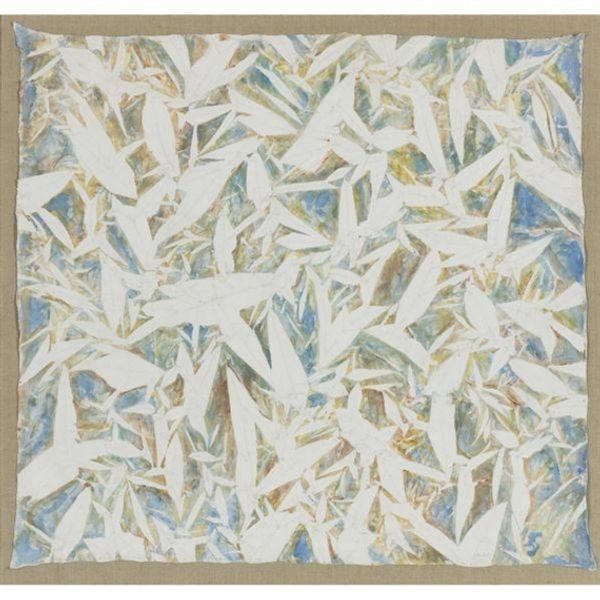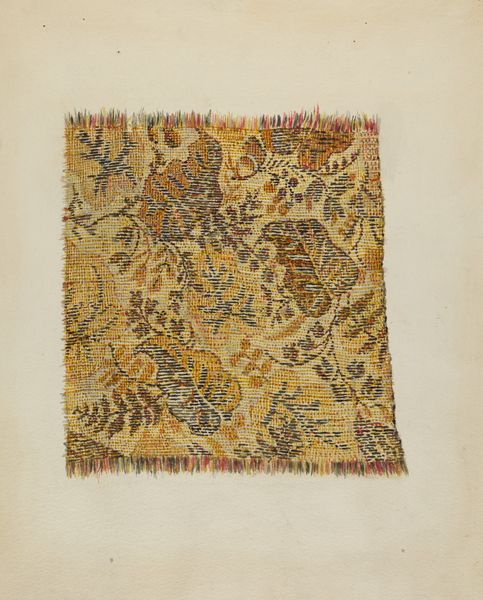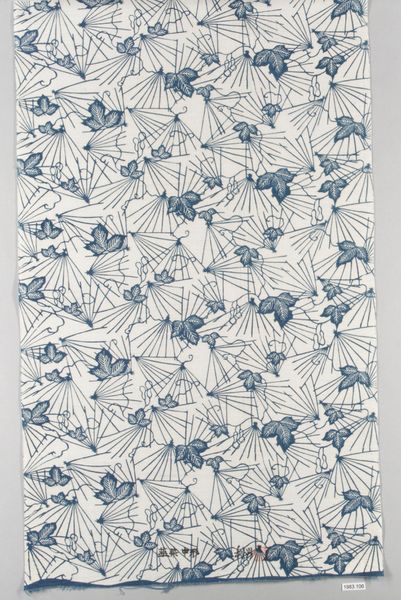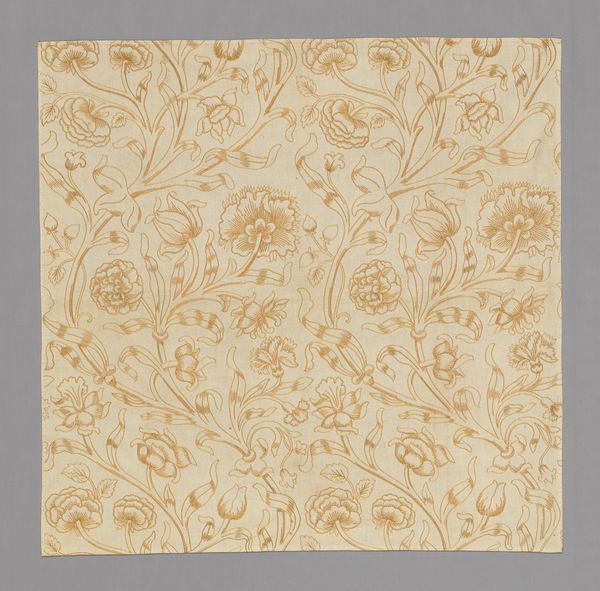
textile
#
natural stone pattern
#
naturalistic pattern
#
organic
#
art-nouveau
#
arts-&-crafts-movement
#
textile
#
fashion and textile design
#
figuration
#
abstract pattern
#
organic pattern
#
vertical pattern
#
pattern repetition
#
textile design
#
imprinted textile
#
layered pattern
Dimensions: 28 1/2 x 30 in. (72.4 x 76.2 cm)
Copyright: Public Domain
Curator: Before us hangs the "Poet's-narcissus textile," a work created by Associated Artists, placing it sometime between 1883 and 1900. Editor: My initial reaction is one of quietude. The subdued palette, the repeating floral motif—it evokes a certain peaceful domesticity. Curator: Absolutely. Associated Artists was, of course, a significant force in the American Arts and Crafts movement. They actively promoted the idea of art in everyday life, believing that design should be accessible to all social classes, pushing back against industrialization. Editor: And here we see that philosophy rendered quite literally. The textile, its very materiality, speaks to the value placed on handcrafted items, on slowing down the means of production. Can you imagine the labor involved in producing the patterned design, repeating over the length of the fabric? Curator: It's a compelling statement on design reform and this approach certainly influenced the aesthetic sensibilities of the late 19th century. What I find particularly intriguing is the way the poet's narcissus is rendered: at once recognizable yet abstracted. This approach would have signaled refinement and aesthetic awareness in its day. Editor: I agree. This is more than simple botanical representation; it suggests a dialogue between art and nature. One has to wonder what types of dyes were utilized and the ways in which the piece was manufactured. It looks almost like an attempt to imitate a fine painting within a usable good. Curator: The textile undoubtedly represents a broader trend— the democratizing impulse of the era. This idea sought to bring aesthetic and artistic values to functional objects. You see here how textile design became elevated as a valid artistic form. Editor: By focusing on accessible artistry, items such as the narcissus textile highlight not just an appreciation of nature, but also the labour and skill involved. One can picture where such fabrics could have hung as domestic adornments, signalling refined aesthetics of the inhabitants. Curator: Looking closely at this Poet's-narcissus textile is fascinating. It is, in some ways, a quiet protest against industrialization as well as an embracing of domesticity and an elevated artistic experience within the home. Editor: Indeed. I will have to examine more of their materials and techniques the next chance I get. The textile's significance lies in its testament to human creativity in industrial capitalism.
Comments
No comments
Be the first to comment and join the conversation on the ultimate creative platform.
